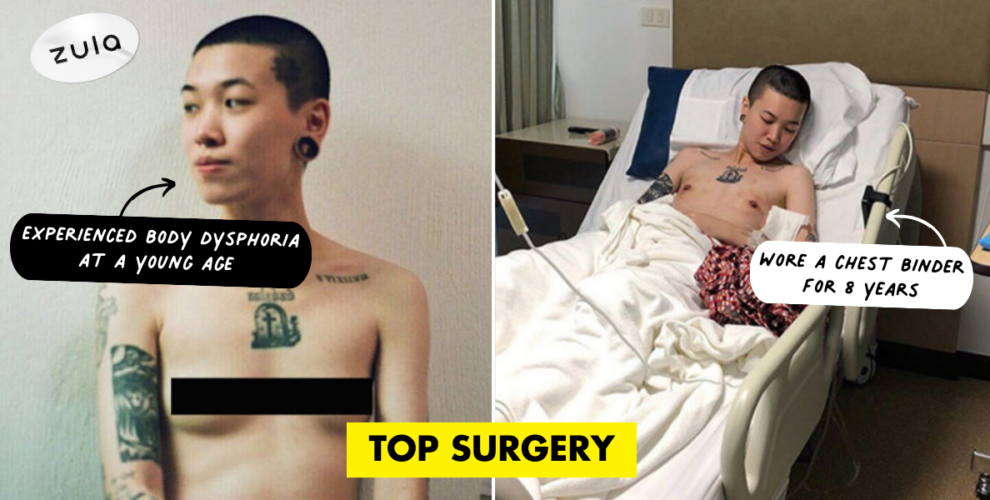Cayes Hong’s Top Surgery
“You caught me on a good day actually,” Cayes Hong, a 25-year-old transgender musician, tells me. “This is the first time [I’ve worn] a white T-shirt since I was about 10.”
That may seem insignificant to most people, but for Cayes, it’s a milestone. From their early teens to adulthood, Cayes steered clear of white tees in a bid to conceal the chest binder they wore under their shirts.
That all changed when they went for top surgery a month ago. Over coffee, Cayes shares why they decided to get top surgery and the struggles they faced along the way, tracing all the way back to their youth.
Contents
- Cayes Hong’s Top Surgery
- Experiencing body dysphoria at a young age
- Wearing a chest binder for 8 years
- When top surgery became a priority
- Raising funds for the top surgery
- Having a panic attack before their surgery
- After the top surgery
- The recovery process
- For those who are struggling with body dysphoria
- Advice for those considering a top surgery
- Cayes Hong’s Top Surgery Experience
Experiencing body dysphoria at a young age
Since they was a child, Cayes felt a disconnect between their gender identity and assigned sex at birth, which caused them a huge amount of discomfort and distress. This is a condition known as body dysphoria.
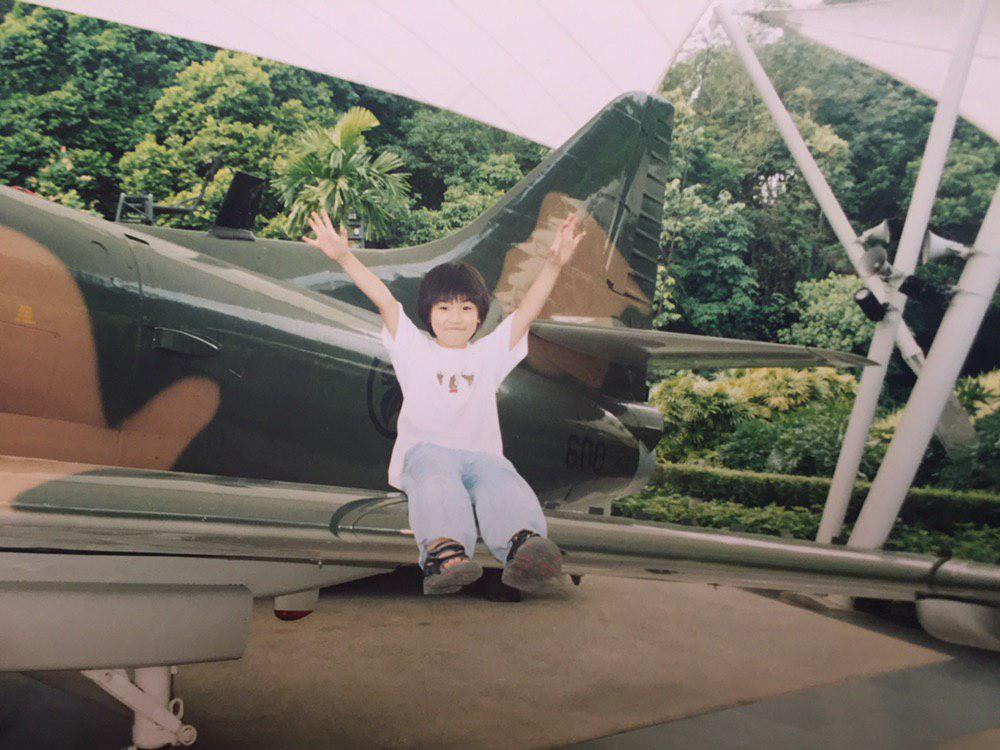
Cayes had experienced body dysphoria since they were 7 or 8, long before they even knew of the term. “I never saw myself as female from the start, so it was very hard to look in the mirror,” they share.
“My chest has been my biggest source of dysphoria for many years. My whole wardrobe is tailored so that I can wear shirts that hide my figure; something I can wear my binder under and not have it be seen,” Cayes explains.
Wearing a chest binder for 8 years
Before Cayes started developing breasts in secondary school, they had already started binding their chest to create a flatter appearance. “Seeing my [female] friends grow up and go through puberty, I was so paranoid that I would also have a chest. I wanted to make sure it never grew.”
“I remember buying my first proper binder when I was 17. It’s a singlet with a binder inside, so the binder can’t be seen. I was very happy with that but I wished it were a lot longer,” Cayes recalls. The discomfort of wearing a chest binder eventually made Cayes convert to stomach binders, which they bought from Ezbuy.
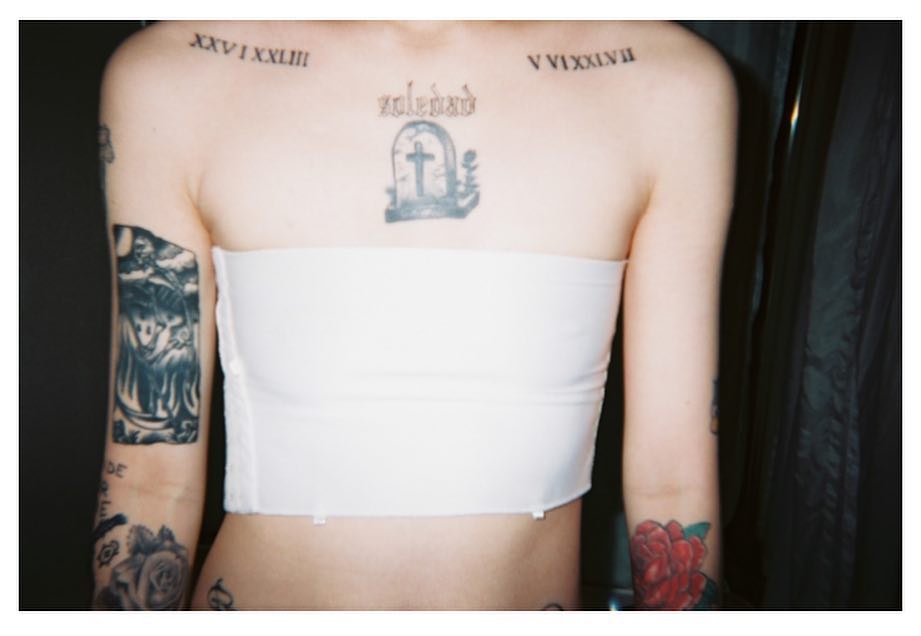 A stomach binder wrapped around Cayes’ chest
A stomach binder wrapped around Cayes’ chest
“They aren’t meant for chests,” Cayes notes. “They aren’t made to expand as you breathe, so it’s a fixed size. Before I put on my binder, I have to take a really deep breath. I also used ACE bandages. You tighten it as much as you can and you clip it on. I remember making it so tight that the metal clips always broke.”
While it eased Cayes into their appearance, the consistent use of a makeshift chest binder gave way to various health issues, such as “a decreased lung capacity [and a] smaller ribcage.” To hide their binder, they developed a slouch, which gradually led to back pain and scoliosis, a sideways curvature of the spine.
For as long as they could remember, Cayes would make the same wish on every birthday and every 11:11 they encountered. “[I] wish that I had just been born the right gender and therefore avoid all the trouble and expenses of transitioning,” they wrote in an Instagram post.
When top surgery became a priority
When Cayes realised they were transgender, it brought about a sense of liberation. They also identify as non-binary, a spectrum of genders that don’t fall into the male or female category. Hence, Cayes’ pronouns are ‘they/them’.
After they came out on Instagram in 2015, they started to look up surgeons who performed top surgery to gather information and their price lists. They read up on the different top surgery techniques to find out which would be the best for their chest.
Top surgery is the most common procedure performed on transgender female-to-male (FTM) individuals. It is designed to remove breast tissue for a flatter, male-looking chest, and there are several different techniques to achieve that.
They had saved up close to $10,000 from working full-time, but their journey to getting a top surgery came to a grinding halt when they hit their lowest point at the end of 2018. After battling bouts of depression, Cayes became suicidal. “I decided I didn’t want to live much longer. I wanted to die before I turned 22,” they share.
Cayes flew overseas to meet with their friends and spent most of the money they had saved up, leaving them with around $3,000 in their bank account. While they were in the U.K., they met up with their best friend, and that’s when things turned around.
“We went to so many drag shows and visited queer spaces. After that trip, I realised I could be openly trans and queer. That was when I started to dig deep and think about what I wanted to do.”
Top surgery was right on top of Cayes’ list.
Raising funds for the top surgery
Two weeks after their trip to the U.K., Cayes emailed Kamol Cosmetic Hospital. Dr. Kamol Pansritum was on Cayes’ list of top 5 surgeons and is based in Bangkok.
“The top surgery itself costs about $8,000, not including hospitalisation, checkups and accommodation,” Cayes explains. “I gave myself 6 or 7 months to save up, so I booked my top surgery for 11 November—a very nice date.”
As a musician, Cayes sings and plays the guitar during gigs. “I was constantly busy. I worked so many jobs and I had multiple bookings on the same day,” they said. However, they knew they needed a lot more help raising funds for the surgery.
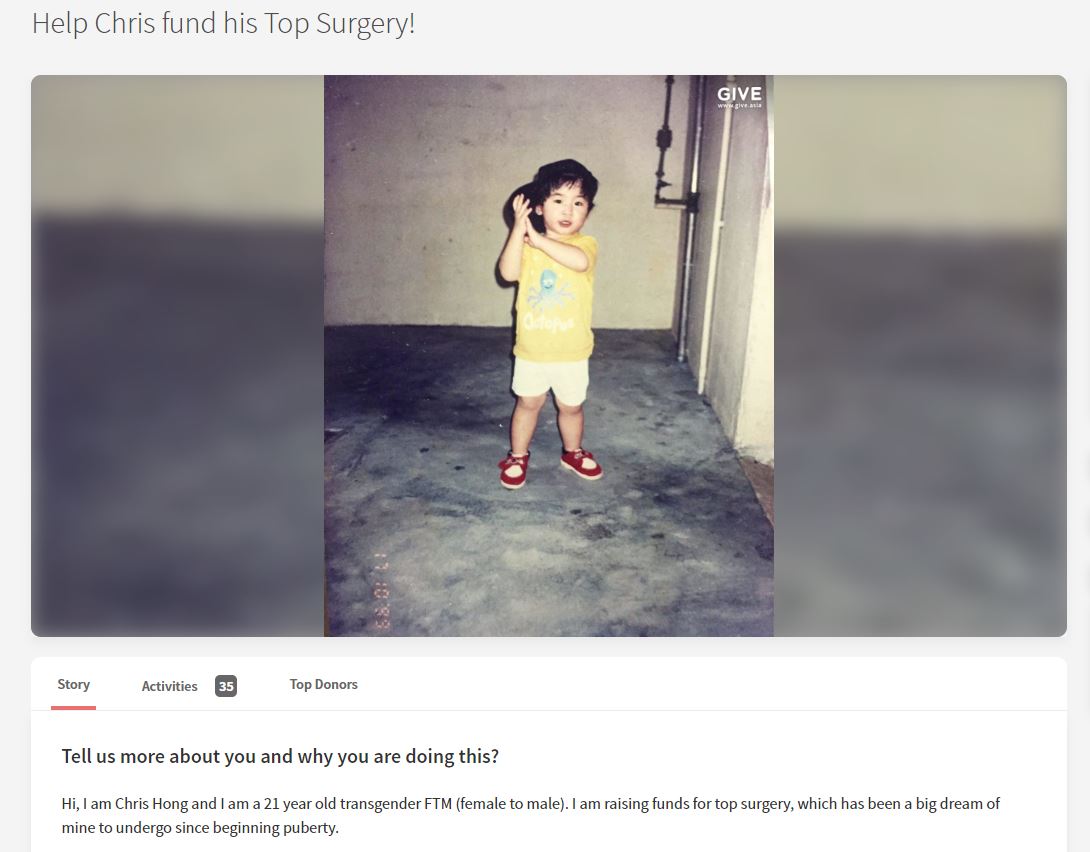
Chris’ GIVE.asia fundraising campaign
In May 2019, Cayes found a crowdfunding site called GIVE.asia, but their campaign was declined on the grounds that their surgery wasn’t for a life-threatening disease. Cayes protests, “I’ll admit that it’s not a disease, but that doesn’t mean it’s not life-threatening.”
A study showed that 1 in 4 pre-teens in the LGBT community are more likely to commit suicide due to psychological conflict and “how the world reacts to their identity”.
Cayes proceeded to negotiate with one of the employees at GIVE.asia. “He allowed my campaign to be posted, but it would not be on the main website. Instead, it would be a private link that others can access,” they share.
By November, they had managed to raise $5,101, supplementing the rest of the fees with the money they had saved.
Also read:
When Daddy Becomes Mummy: Fanny Ler On Being A Transgender Parent In Singapore
Having a panic attack before their surgery
When they arrived at Kamol Cosmetic Hospital, anxiety washed over them. “I have a phobia of hospitals because every time I go there, nothing good ever happens. Being in one was very scary, but being the one to go for surgery was even scarier,” they express.
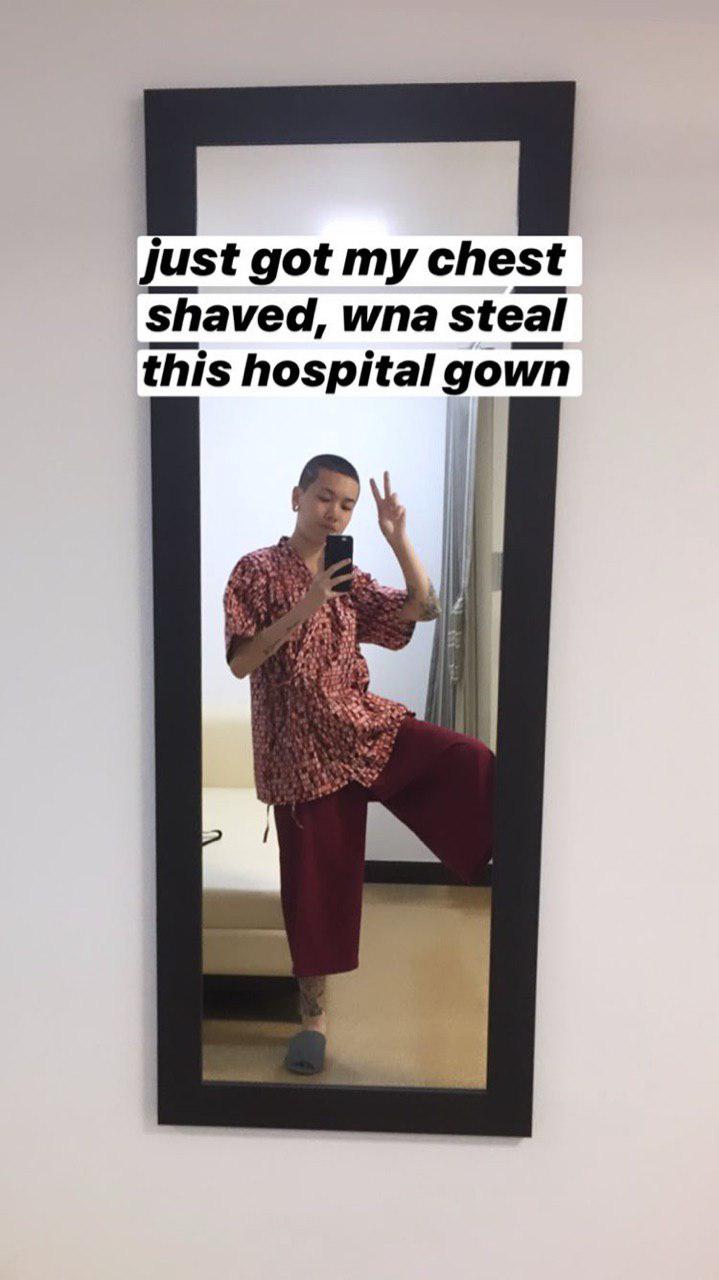 Snapping pictures before the surgery
Snapping pictures before the surgery
Despite feeling the jitters, Cayes was excited the day leading up to the surgery. “I was having fun taking pictures of myself in the ward and my friend came to visit, so everything was okay. That was until I was in the operating theatre,” they say.
With their arms strapped down to their sides, Cayes started to have a panic attack. “When my BP (blood pressure) spiked, the nurses tried to calm me down. I tried to, but I couldn’t. I could hear the beeping of my heart rate, so I knew it was too fast. I knew something was wrong,” they recount.
When they couldn’t maintain their composure, a nurse put a mask over their mouth and administered the anaesthesia in advance. “I felt one cold hit of air, and then I was out,” Cayes remembers.
After the top surgery
After the 3-hour surgery, Cayes woke up shivering. In the dark recovery room, all they could see was the green glow emitted from the ECG machine behind them. “I tried to sit up, and that was the biggest mistake. It was so fucking painful. I didn’t know I had [surgical] drains in,” Cayes recalls.
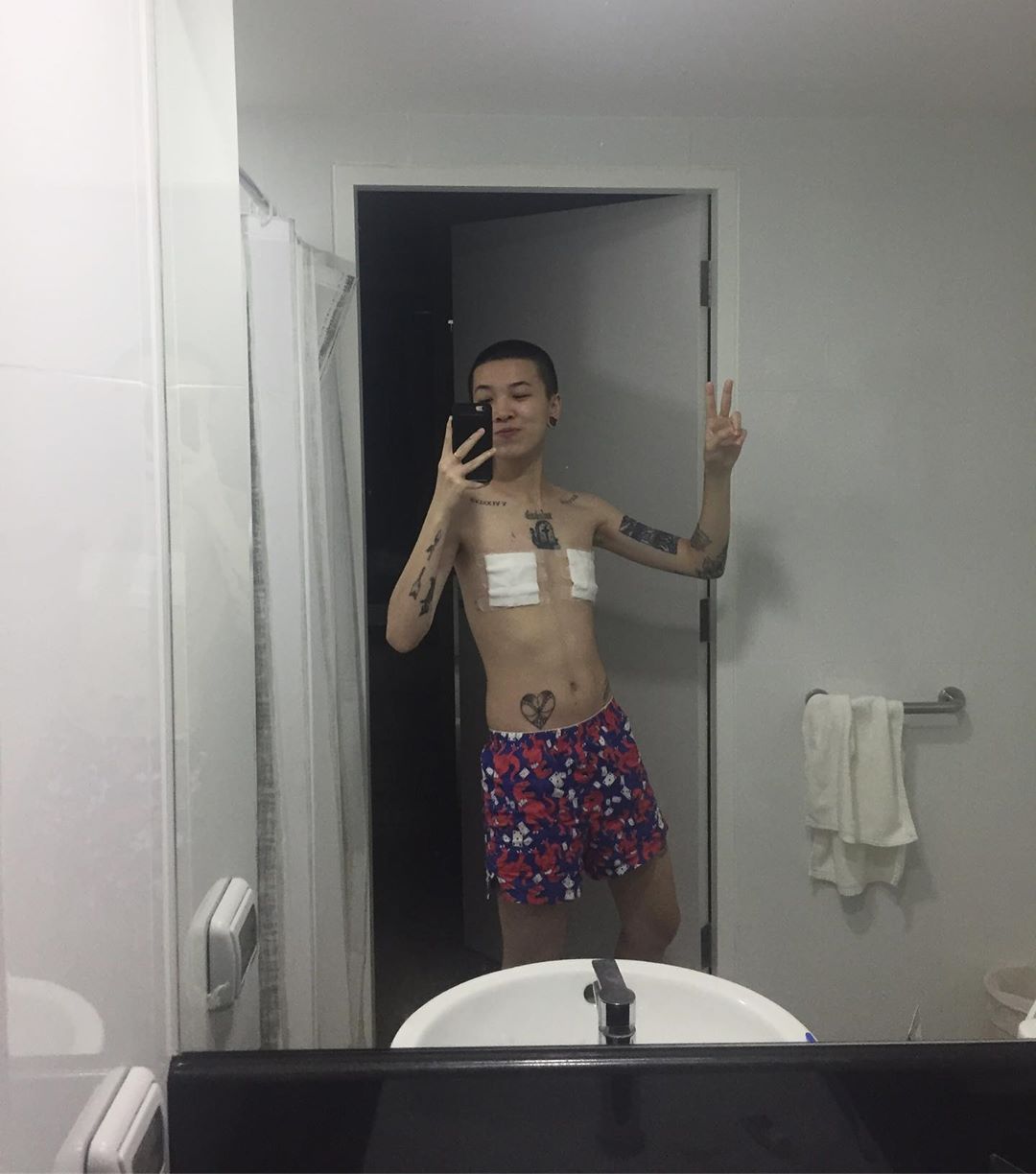 Cayes after their nipple reduction surgery
Cayes after their nipple reduction surgery
In addition to the top surgery, Cayes also had a nipple reduction surgery. Since it would be performed by a different surgeon, Dr. Kamol gave them the option to come back for surgery on a different trip or have it done a week after. Cayes chose the latter, so they stayed in Thailand for 1 week.
“I had Periareolar [surgery], so the incision is around the areola. They cut a doughnut shape around my nipple and used that space to take out the tissue underneath. The nipple stalk is left intact, so the nipple sensation is supposed to be there. I’m hoping it comes back, because I don’t feel anything,” Cayes laughs after explaining the procedure.
The recovery process
For 6 weeks, Cayes had to wear a compression vest. It’s a snug garment that helps to minimise scars, prevent fluid build-up and aids the skin in adhering to the chest wall. After wearing it for a month, however, they decided to take the vest off.
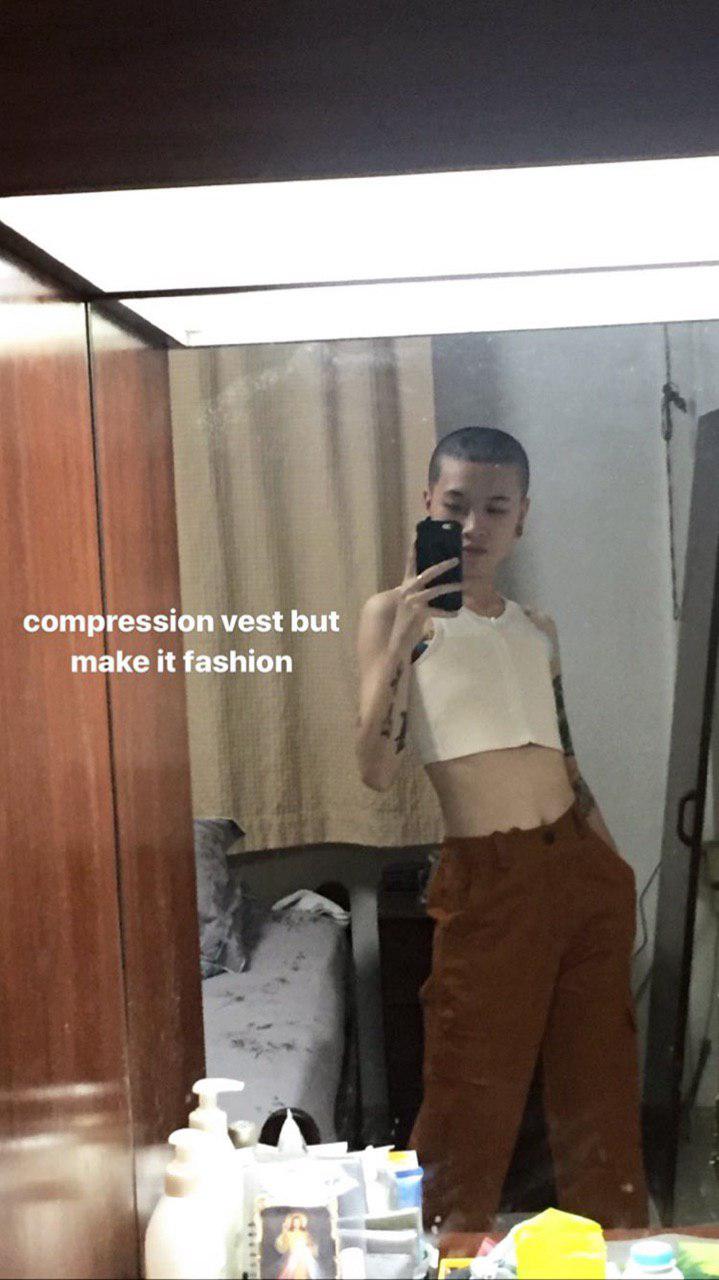
“I still wear it at night when I go to sleep for protection. When I first [wore] the compression vest, it took me 5 hours to fall asleep. If I want to use my phone for a prolonged period of time, my whole arm will go numb. There’s no blood circulation, but it’s worth it,” they say with a smile.
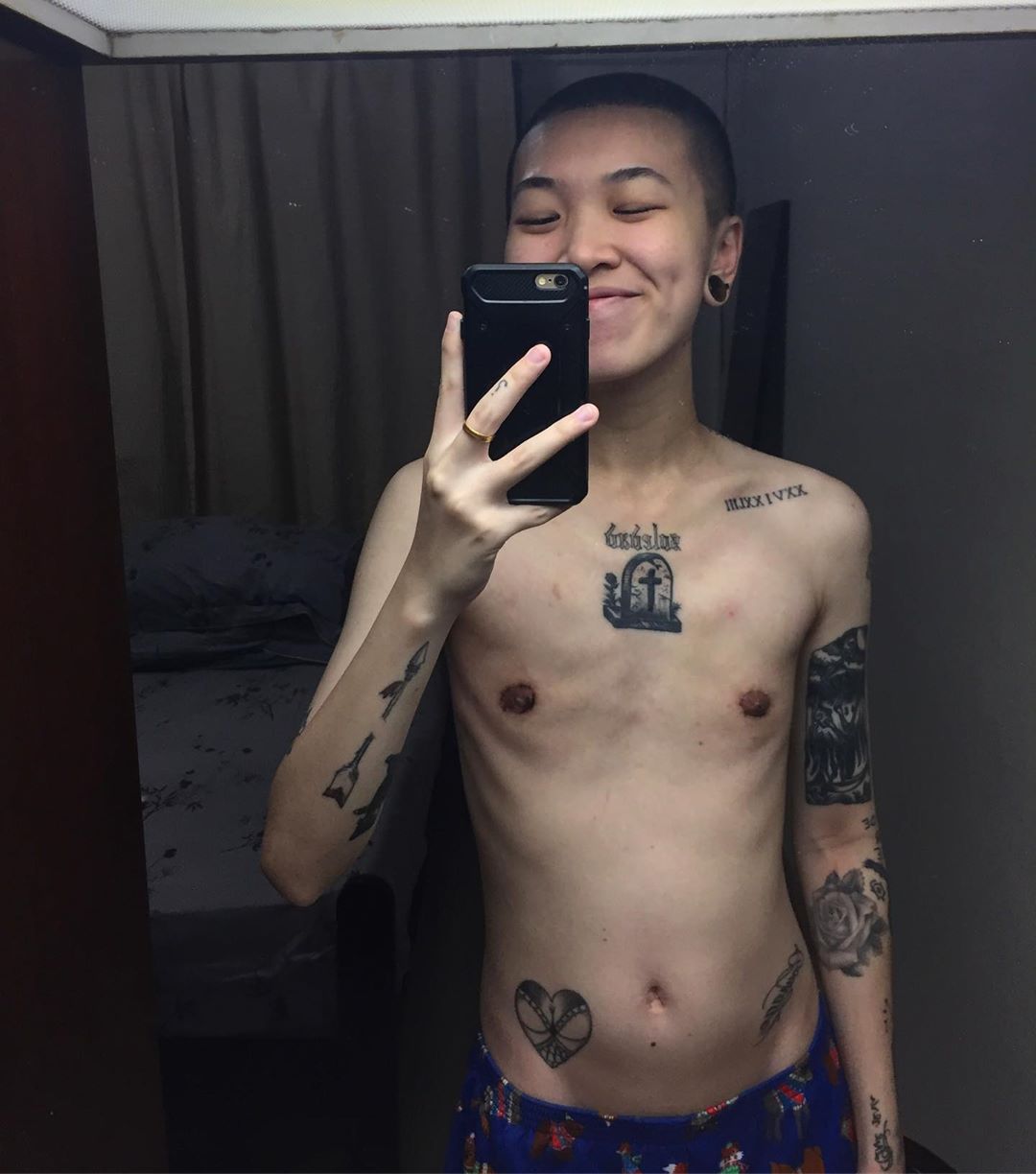
Cayes 3 weeks after their top surgery
It could take anywhere between 6 weeks to 6 months after the surgery for patients to regain full use of their body. After 6 weeks, Cayes’ chest didn’t feel as constricted as it did a month after the surgery, so they are able to lift both their arms above their head. The scabs and sutures have mostly healed and fallen off too.
“I don’t think I’ve gone this long feeling present in my own body,” Cayes shares. “I have, more times in the last month than in the last year, looked at myself and liked what I saw.”
For those who are struggling with body dysphoria
As someone who still struggles with body dysphoria, Cayes says, “Don’t force yourself to be in a box. It’s fine to have a list of things that you want to be, but make sure it’s because it would make you more comfortable and happy, instead of changing how people perceive you. There’s no right way to be trans.”
“This is gonna sound so Tumblr but, ‘People who mind don’t matter, people who matter don’t mind’.”
They add, “It also helps that I work in such an accepting, inclusive place. It makes me feel so much better. I don’t feel like I have to hide anything.” Cayes is referring to their day job at The Moon, a local bookstore with a strong focus on female writers and writers of colour.
Cayes looks up to trans and gender non-conforming individuals too, such as Alok Vaid-Menon, Chella Man and Theo Germaine. “[If] they can turn down gender stereotypes and be happy, why can’t we?” they muse.
Advice for those considering a top surgery
Before you start looking for a surgeon, Cayes suggests doing some research on your chest size as well as the top surgery procedures you’re eligible for.
From there, Cayes turned to Google and Facebook groups for relevant information. They are currently following a Facebook group called Top Surgery Support (removal/reduction), which has helped them in their journey.
“You can get a wide variation of results depending on which surgeon you want. You can search the surgeon’s name in the group and it’ll come up. It’s quite easy and accessible,” Cayes assures.
Cayes Hong’s Top Surgery Experience
With limited resources in Singapore, Cayes knows how difficult and confusing it can be for trans youth to begin transitioning. We hope their story sheds light on top surgery procedures as well as the transgender community in Singapore.
All images courtesy of Cayes Hong.
Some quotes have been edited for brevity and clarity.
This post was first published on 3 January 2020 and last updated on 24 September 2023.
Also read:
7 Transgender Singaporean Struggles That Happen On A Daily Basis

